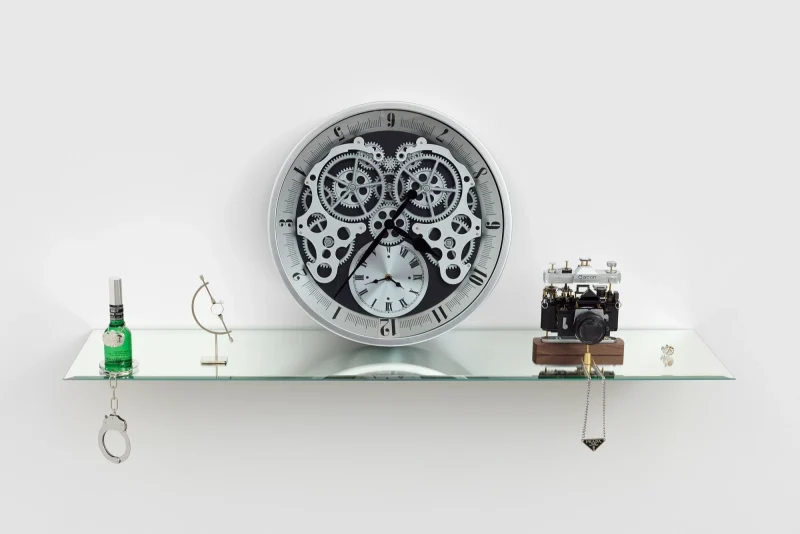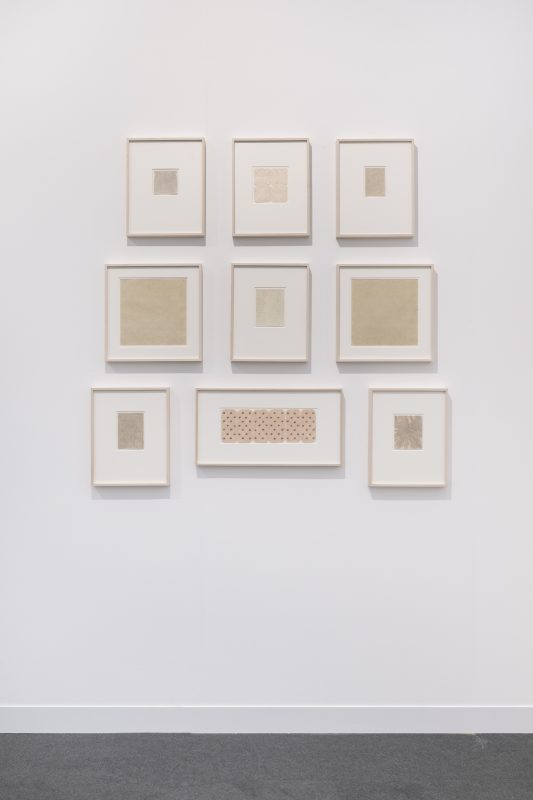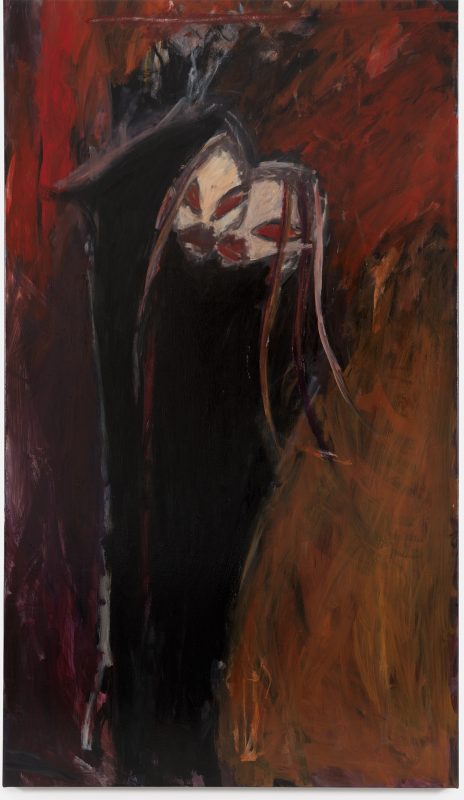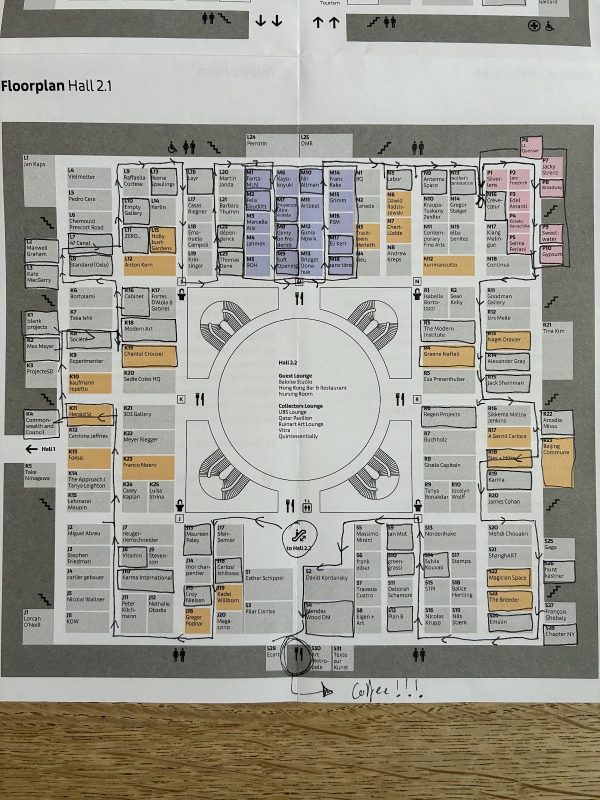Maureen Paley & Herald St have announced Gebrochenes Pferd, an exhibition of new works by Alexandra Bircken taking place in both galleries’ East London premises.
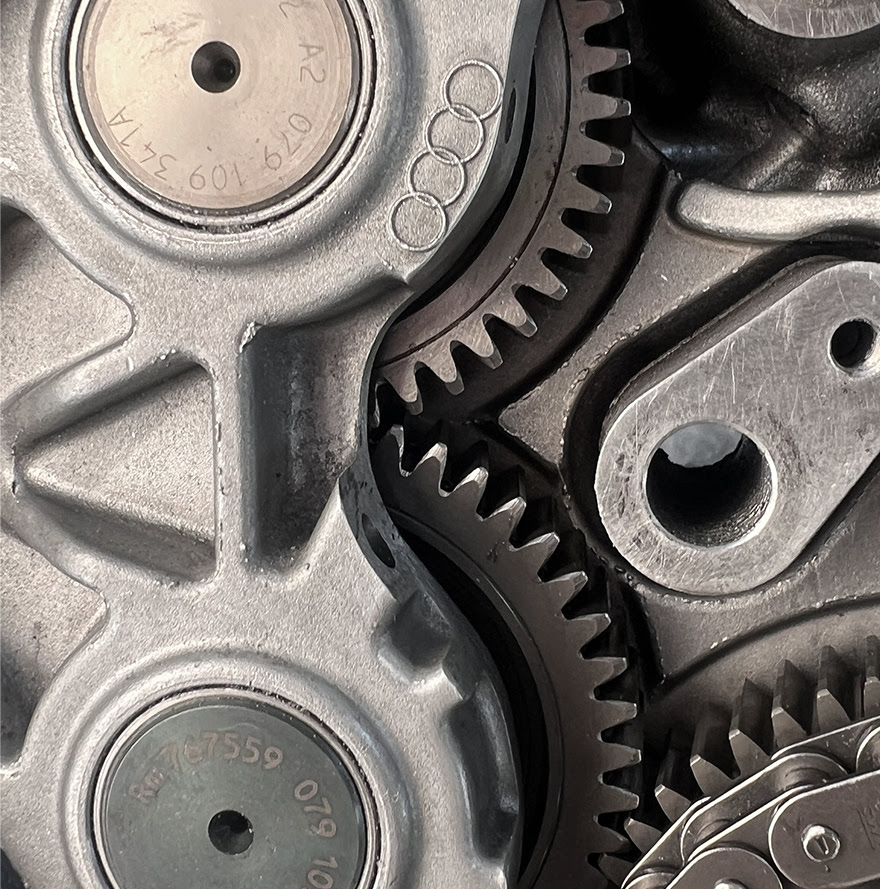
Comprising sculpture, wall installation, and photography, this body of work continues Bircken’s clinical dissections of cars and motorcycles to reveal our visceral connections to the machines which empower us. Through weaving and chromed surfaces, she expands her focus from that of the singular body to the enmeshed systems which simultaneously protect and stifle the individual.
German for ‘broken horse’, the title of the exhibition announces a rupture and a feeling of unease. The same name is given to two works which echo one another in separate spaces. At Maureen Paley, we are confronted by a rocking horse in turned wood, its abdomen sliced down the middle and splayed open. Its counterpart at Herald St is a V10 combustion engine removed from an Audi RS 6 and cut into six clean tranches. The horse has long been a symbol of mobility, unbridled speed, and technological prowess even after it was replaced by fossil-fuel powered machines, as exemplified by Ferrari’s Cavallino Rampante logo. The V10 represents a pinnacle in the era of combustion engines, embodying an excess of engineering, obsession with size, and hedonistic recklessness. In this pair of sculptures, both are rendered destructive and dysfunctional, the thrill of speed and fanatical optimism of progress cut dead and brought to a standstill. Yet there remains a chance of resurrection, resting on the hinge holding the two halves of the wooden horse apart.
Bircken has long held a rooted interest in fabrics and coverings which act as a second skin, a boundary between our inner and outer selves. In this exhibition, she exposes the networks inherent to threaded and woven materials. Each gallery features a wall piece made from the cable harness of a car, a rope-like construction which, when unravelled and laid out, extends for several metres. Like the nervous system of a body, this mechanism uses electric currents to carry vital information throughout an automobile, with each wire playing an individual role to power a greater whole. At Herald St, the harness is arranged along a warp and weft and transformed into a thick cloth based on a rigid grid, ordering the cables into a new organisation. Grids and checkerboards are also found in two pieces with wool and nylon frameworks, one in each location. Female figures emerge from the black-and-white and black-and-nude knits, blending into the stinging precision of the patterns and falling softly, held by their strict underlying structures. Through weaving, knotting, and braiding, the artist uses textiles as a metaphor for cultural achievement, social systems, and societal regulations, which at once capacitate and encage us inescapably.
Bircken employs repetition and mirroring throughout the exhibition, with sets of works reflecting each other across the two galleries, including a stainless-steel bicycle seat at Maureen Paley and a severed motorcycle at Herald St with a windshield and mudguard in a similar chromed finish. As the surrounding environments inscribe onto their glossy, impenetrable surfaces, the impressions become distorted and the objects lose their inherent logic, becoming difficult to grasp and creating a fetishistic and fascinating allure. The wallpaper lining the walls of both spaces reproduces the signature of Christine Lagarde, the current president of the European Central Bank, as it appears on each Euro banknote. It is here reduced to a graphic representation of a single act and arranged in a grid, transformed into a repeating, ornamental pattern. Looking to the heightened, sensitive moment we live in, Bircken dismantles the currencies and vehicles which enable and empower us, laying bare their anatomies. She displays parallels in the organic and the mechanic, revealing a landscape in a butcher’s cutting board or intestinal twists in a steel manifold. By rearranging their components, she exposes our dependence on the machines and networks which offer us exuberance and endless possibilities as much as they hold us bound and imprisoned to them. Text by Émilie Streiff
Alexandra Bircken, Gebrochenes Pferd, 19th September – 2nd November 2024, Maureen Paley & Herald St
Private view: Thursday 19th September, 6PM – 8PM
About the artist
Alexandra Bircken (born 1967) is a German artist. She is based in Berlin and Munich. Bircken creates assemblages featuring everyday ephemera like wood, knitted fragments and twigs. Her work has strong references to traditional craft practices and to the natural world, from which she sources her materials.
Bircken was born in Cologne, Germany, in 1967. In high school, she became friends with Lutz Hülle and Wolfgang Tillmans Bircken earned a BA in Fashion Design from Central Saint Martins College of Art and Design in London in 1995, after which she founded her own fashion label In 2000, Bircken returned to Central Saint Martins, where she was a professor until 2008. She was awarded artist residencies at Kölnischer Kunstverein in Cologne (2004), Studio Voltaire in London (2011) and the British Council in Harare, Zimbabwe (2014).
Since 2018, Bircken has been a professor at the Academy of Fine Arts in Munich.Bircken’s work has been exhibited at Museum Abteiberg in Mönchengladbach, the Kunstverein Hannover, the New Museum in New York, the National Gallery of Zimbabwe, the Stedelijk Museum in Amsterdam, the Hepworth Wakefield in West Yorkshire, and the Whitechapel Gallery in London. In 2019, her work was included in the group exhibition, May You Live In Interesting Times, curated by Ralph Rugoff and presented at the 58th International Art Exhibition of La Biennale di Venezia in Italy.
Alexandra Bircken on FAD magazine
